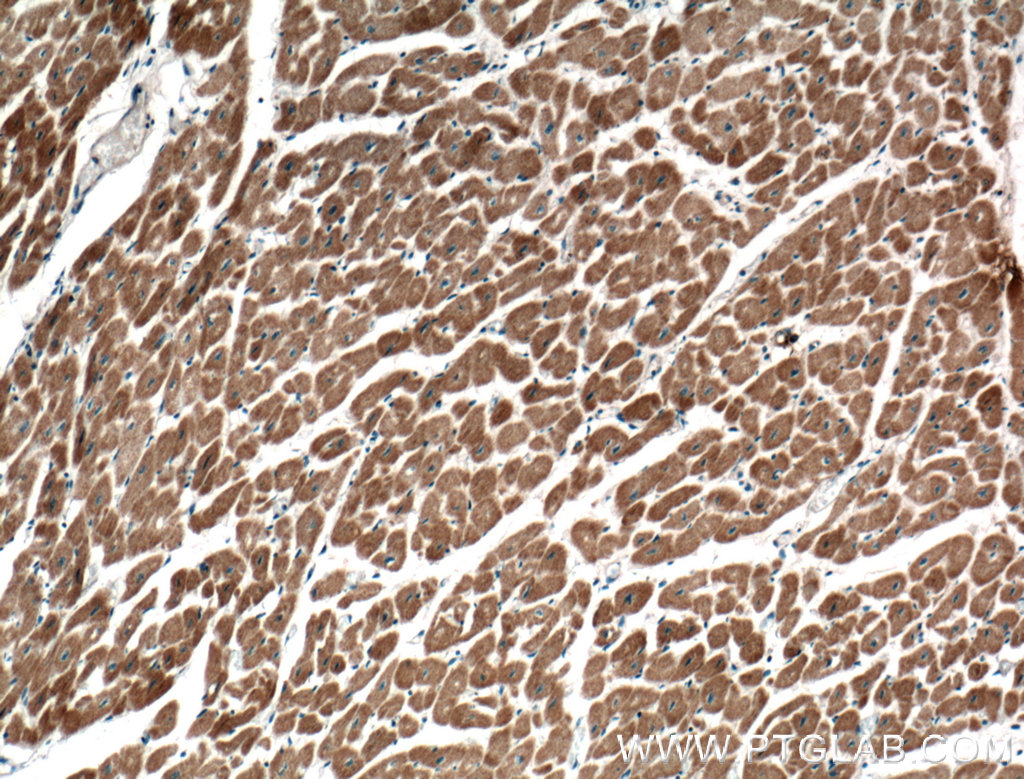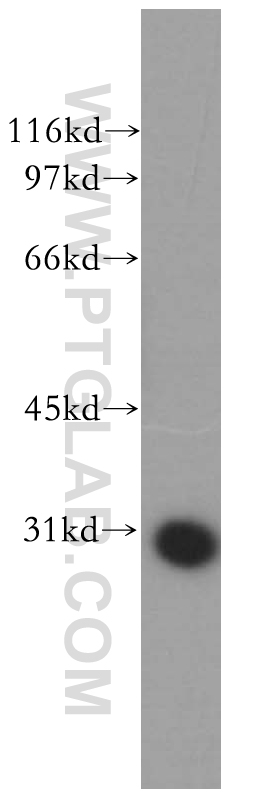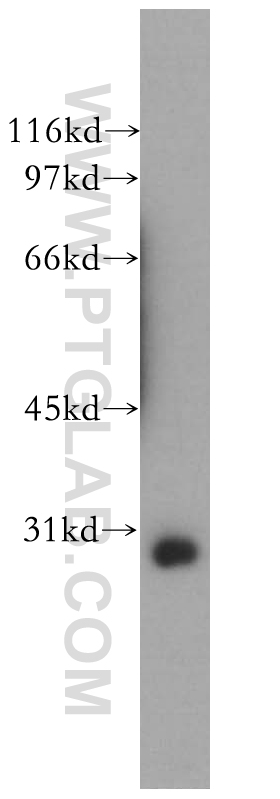验证数据展示
经过测试的应用
| Positive WB detected in | human heart tissue, human kidney tissue |
| Positive IHC detected in | human heart tissue Note: suggested antigen retrieval with TE buffer pH 9.0; (*) Alternatively, antigen retrieval may be performed with citrate buffer pH 6.0 |
推荐稀释比
| 应用 | 推荐稀释比 |
|---|---|
| Western Blot (WB) | WB : 1:500-1:1000 |
| Immunohistochemistry (IHC) | IHC : 1:50-1:500 |
| It is recommended that this reagent should be titrated in each testing system to obtain optimal results. | |
| Sample-dependent, Check data in validation data gallery. | |
产品信息
13445-1-AP targets GIMAP2 in WB, IHC, ELISA applications and shows reactivity with human samples.
| 经测试应用 | WB, IHC, ELISA Application Description |
| 经测试反应性 | human |
| 免疫原 | GIMAP2 fusion protein Ag4273 种属同源性预测 |
| 宿主/亚型 | Rabbit / IgG |
| 抗体类别 | Polyclonal |
| 产品类型 | Antibody |
| 全称 | GTPase, IMAP family member 2 |
| 别名 | GIMAP2, GTPase IMAP family member 2, GTPase, IMAP family member 2, HIMAP2, IMAP2, Immunity associated protein 2 |
| 计算分子量 | 337 aa, 38 kDa |
| 观测分子量 | 28-40 kDa |
| GenBank蛋白编号 | BC032345 |
| 基因名称 | GIMAP2 |
| Gene ID (NCBI) | 26157 |
| RRID | AB_2111871 |
| 偶联类型 | Unconjugated |
| 形式 | Liquid |
| 纯化方式 | Antigen affinity purification |
| UNIPROT ID | Q9UG22 |
| 储存缓冲液 | PBS with 0.02% sodium azide and 50% glycerol , pH 7.3 |
| 储存条件 | Store at -20°C. Stable for one year after shipment. Aliquoting is unnecessary for -20oC storage. |
背景介绍
This protein was not eliminated clearly. It belongs to GTPase of the immunity-associated protein family. One of its homologous protein, GIMAP1, runs as a 30kd protein in SDS-PAGE, lower than the calculated molecular weight. This antibody detected one 28kd band in several tissues.
实验方案
| Product Specific Protocols | |
|---|---|
| WB protocol for GIMAP2 antibody 13445-1-AP | Download protocol |
| IHC protocol for GIMAP2 antibody 13445-1-AP | Download protocol |
| Standard Protocols | |
|---|---|
| Click here to view our Standard Protocols |



